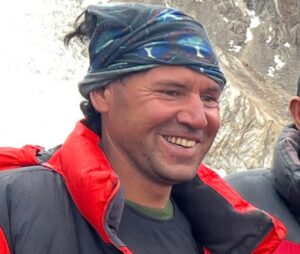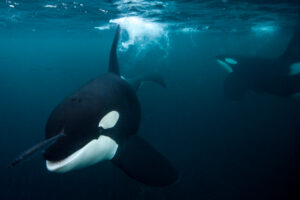When you search for images of Montserrat on Google, a picturesque monastery in Catalonia, Spain pops up. But another Montserrat waits to tell its story. The former Emerald Isle of the Caribbean has become the region’s own Pompeii. Half of the island lies buried in volcanic ash in a volatile yet fascinating region called the Exclusion Zone.
Background
Montserrat is a small British Overseas Territory in the Lesser Antilles. It is relatively small, measuring only 16 km long, 11km wide, and 102 sq km in size. On a clear day, you can see Antigua and Guadeloupe.
As with other Caribbean islands, several cultures passed through and settled here. These include the indigenous Tainos and Kalinagos, the Irish, the enslaved Africans, and people from other islands. Before 1995, the population stood at a modest 15,000.

Soufrière Hills and its pyroclastic flow. Photo: IndustryAndTravel/Shutterstock
Most islands of the Lesser Antilles have volcanic origins. Montserrat is the youngest of these. Plymouth, its capital and sole port, sat at the foot of the Soufrière Hills volcano. A stratovolcano, Soufrière Hills rose to 915m and contained several lava domes, with names like Chances Peak, Katy Hill, Silver Hill, and South Soufrière Hills. Until the summer of 1995, the volcano had not erupted for 300 years.
The eruption
Though seismic activity was low over the years, everything changed in mid-July 1995. The volcano started to belch hot rock, gas, and ash into the air and down the volcano’s slopes. Thousands of residents fled quickly before the ash and pyroclastic flow overwhelmed the capital. It buried government buildings, homes, and everything else in its path in a 15m blanket of ash and rock. The pyroclastic flow traveled at 100kph and measured over 800°C.
During the initial eruption, no one got hurt. Half the residents relocated to the northern part of the island. The other half began to migrate to neighboring islands or to the UK. However, volcanic activity continued for months and even years. An explosive eruption occurred in September 1996. In June 1997, another one killed 19 people. This was the final straw for the authorities. They permanently abandoned Plymouth, leaving the capital as a ghost town.

The pyroclastic flow reached the coast. Photo: IndustryAndTravel/Shutterstock
Since the flow reached all the way to the coast, the island had lost its only port. Nothing remained to salvage or rebuild. Plymouth’s abandonment turned out to be a wise choice: Volcanic activity continues to this day, and the highest peak grew from 915m to 1050m.
Exclusion Zone
Two-thirds of the island remains unoccupied to this day. After 1995, only 1,000 people stayed. Today, the population stands at just over 5,300. All live in the northern “safe” zone. The south is now called the Exclusion Zone. This zone is broken into five parts: A, B, C, F, and V. All but Zone V are more accessible because of lesser risk.
Zone V is off-limits to the public because of its close proximity to the volcano. You may obtain special permission from the police to visit Plymouth on certified tours. Depending on the safety conditions of that day, tour guides can take you through the haunted remains of the former capital. Church walls, steeples, and the remnants of a clock tower poke from the ash. You can also see homes with smashed windows, tattered curtains flapping in the ashy wind, and the ruins of former hotels.

An abandoned building in Plymouth. Photo: Dedio/Shutterstock
There are also Maritime Exclusion Zones present which restrict shipping. Ships too can only enter with special permission. They can’t anchor, which benefits coral reefs and fish, which are both thriving. Several systems monitor tectonic activity, and all movement around the Exclusion Zones depends on the hazard levels. There are plans in place to quickly evacuate the remaining residents, if necessary.
The bright side
It sometimes seems that the island can’t catch a break. It is also prone to hurricanes and has to rely on foreign governments for vital infrastructure projects.
Despite losing their original homes and livelihoods, the remaining residents decided to own the natural disaster. Disaster tourism has been slowly on the rise in the last few years. The island proudly markets itself as the Pompeii of the Caribbean. It invites visitors to enjoy both the vibrant greenery of the north and the ashen, haunted south. Though they live in the shadow of a foreboding opponent, they still strive to maintain Montserrat’s living legacy.






